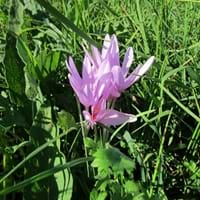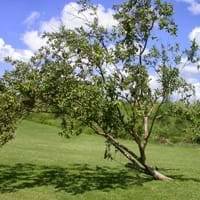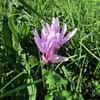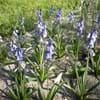Life Span
Perennial
Perennial
Type
Bulb or Corm or Tuber
Broadleaf Evergreen
Origin
Europe, Turkey, Central Asia, Western Asia
Central America, South America
Types
Colchicum cupanii, Colchicum alpinum
Psidium guajava,Acca sellowiana
Number of Varieties
Not Available
Habitat
Fields, meadows, Rocky areas, Shaded sites, Woodlands
Moist Soils, Riverbanks, Semi arid regions
USDA Hardiness Zone
Not Available
10-15
AHS Heat Zone
Not Available
Not Available
Habit
Clump-Forming
Oval or Rounded
Flower Color
White, Yellow, Purple, Violet
White
Flower Color Modifier
Bicolor
Bicolor
Fruit Color
Not Available
Yellow, Pink
Leaf Color in Spring
Green
Olive, Dark Green, Copper
Leaf Color in Summer
Light Green
Olive, Dark Green
Leaf Color in Fall
Several shades of Green
Olive, Dark Green
Leaf Color in Winter
Light Green
Olive, Dark Green
Leaf Shape
Long Linear
Oblong elliptic
Plant Season
Spring, Fall, Winter
Spring, Summer, Fall, Winter
Sunlight
Full Sun, Partial Sun
Partial Sun
The pH of Soil
Acidic, Neutral
Acidic, Neutral, Alkaline
Soil Drainage
Well drained
Well drained
Bloom Time
Early Spring, Late Summer, Early Fall, Fall, Late Fall, Winter, Late Winter
Late Spring, Early Summer
Tolerances
Drought
Drought
Where to Plant?
Container, Ground, Pot
Ground
How to Plant?
Divison, Seedlings
Grafting
Plant Maintenance
Low
Medium
Watering Requirements
Do Not over Water, Medium, Needs less watering, Never Over-water, Requires regular watering, Water less during winter
Average Water Needs, Does not require lot of watering
In Summer
Ample Water
Moderate
In Spring
Less Watering
Less Watering
In Winter
Less Watering
Less Watering
Soil pH
Acidic, Neutral
Acidic, Neutral, Alkaline
Soil Drainage Capacity
Well drained
Well drained
Sun Exposure
Full Sun, Partial Sun
Partial Sun
Pruning
Remove damaged leaves, Remove dead leaves, Remove dead or diseased plant parts, Remove shoots
Prune in early spring, Remove dead branches, Remove dead leaves
Fertilizers
fertilize in growing season, Less fertilizing
Fertilize every three months, fertilize in growing season
Pests and Diseases
Not Available
Anthracnose, Bacteria wilt, Canker, Cercospora leaf spot, Red blotch, Ring spot
Plant Tolerance
Drought
Cold climate, Heat Tolerance, Variety of soil types
Flower Petal Number
Single, Double
Single
Foliage Texture
Coarse
Medium
Foliage Sheen
Not Available
Matte
Attracts
Bees, Butterflies
Ants, Birds, Bugs
Allergy
Kidney Disease, Low blood pressure, Stomach pain, Toxic, Vomiting
Cold, drowsiness, Mouth itching
Aesthetic Uses
Landscape Designing
Not Used For Aesthetic Purpose
Beauty Benefits
No Beauty Benefits
Acne, Improve skin tone, Treatment of Dark Spots
Environmental Uses
Air purification, No fertilizer, pesticides, or herbicides needed, Prevent Soil Erosion
Food for birds, Food for insects, Shadow Tree, soil stabilisation
Medicinal Uses
anti-cancer, anti-inflammatory, Diarrhea, Diuretic, Rheumatism
Diabetes, Diarrhea, Inflammation, Minerals
Part of Plant Used
Flowers, Leaves
Bark, Fruits, Stem
Other Uses
Employed in herbal medicine, Showy Purposes, Used as Ornamental plant, Used for its medicinal properties
Application in Handicrafts, Beneficial species for attracting pollinators, Used as a nemiticide, Used as an insecticide, Used as firewood
Used As Indoor Plant
Yes
Yes
Used As Outdoor Plant
Yes
Yes
Garden Design
Alpine, Container, Cutflower, Foundation, Lawns and Turf, Mixed Border, Rock Garden / Wall, Wildflower
Container, Edible, Fruit, Fruit Tree, Hedges, Houseplant, Screening, Wind Break
Botanical Name
COLCHICUM
PSIDIUM guajava
Common Name
Colchicum
Guava Tree
In Hindi
colchicum
अमरूद [amarood]
In German
colchicum
Echte Guave or Goiaba or Guava or Guayaba or Guayave
In French
colchique
Goyave or Goyavier
In Spanish
Colchicum
Guayaba manzana or Guayabo
In Greek
Colchicum
γκουάβα [nkouáva]
In Portuguese
Colchicum
goiaba
In Polish
Colchicum
guawa
In Latin
Colchicum
Psidium guajava
Phylum
Magnoliophyta
Magnoliophyta
Class
Liliopsida
Magnoliopsida
Family
Liliaceae
Myrtaceae
Genus
Colchicum
Psidium guajava
Clade
Angiosperms, Monocots
Dicotyledonous
Tribe
Not Available
Not Available
Subfamily
Wurmbaeiodeae
Rosoideae
Importance of Colchicum and Guava
Want to have the most appropriate plant for your garden? You might want to know the importance of Colchicum and Guava. Basically, these two plants vary in many aspects. Compare Colchicum and Guava as they differ in many characteristics such as their life, care, benefits, facts, etc. Every gardener must at least have the slightest clue about the plants he wants to plant in his garden. Compare their benefits, which differ in many ways like facts and uses. The medicinal use of Colchicum is anti-cancer, anti-inflammatory, Diarrhea, Diuretic and Rheumatism whereas of Guava is Diabetes, Diarrhea, Inflammation and Minerals. Colchicum has beauty benefits as follows: No Beauty Benefits while Guava has beauty benefits as follows: No Beauty Benefits.
Compare Facts of Colchicum vs Guava
How to choose the best garden plant for your garden depending upon its facts? Here garden plant comparison will help you to solve this query. Compare the facts of Colchicum vs Guava and know which one to choose. As garden plants have benefits and other uses, allergy is also a major drawback of plants for some people. Allergic reactions of Colchicum are Kidney Disease, Low blood pressure, Stomach pain, Toxic and Vomiting whereas of Guava have Cold, drowsiness and Mouth itching respectively. Having a fruit bearing plant in your garden can be a plus point of your garden. Colchicum has no showy fruits and Guava has showy fruits. Also Colchicum is not flowering and Guava is not flowering . You can compare Colchicum and Guava facts and facts of other plants too.





